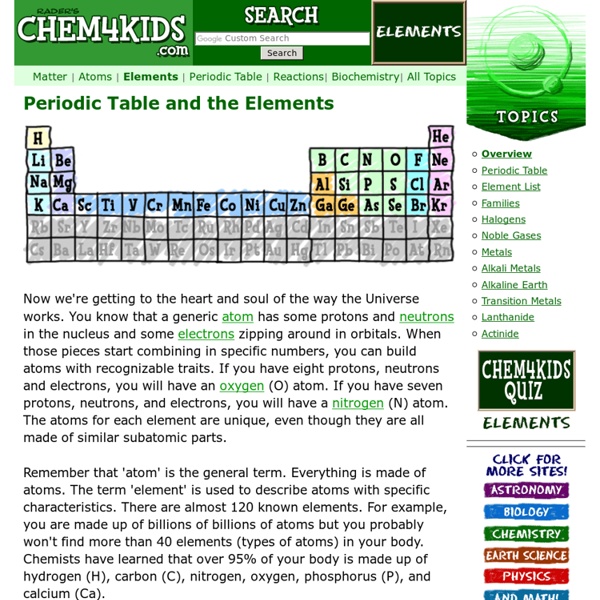Elements & Periodic Table
Now we're getting to the heart and soul of the way the Universe works. You know that a generic atom has some protons and neutrons in the nucleus and some electrons zipping around in orbitals. When those pieces start combining in specific numbers, you can build atoms with recognizable traits. If you have eight protons, neutrons and electrons, you will have an oxygen (O) atom. Remember that 'atom' is the general term. As far as we know, there are a limited number of basic elements. With the tools you learn here, you can explore and understand the Universe. Since the launch of the site, we've been asked, "Why start with 18?" (1) Electrons fit nicely into three orbitals. As we move past the first eighteen elements, you can start to learn about transition elements in the fourth period (row) of the periodic table.
Science Fair Project Resource Guide
If you’ve never done a science fair project before, DON’T PANIC! The IPL’s Science Fair Project Resource Guide will help you through the whole project by guiding you to a variety of excellent web resources. We recommend that you use the buttons above and go through The Steps in number order, at least the first time. On the Getting Started page, you’ll find links which explain what a science fair is and why it’s worth doing. Once you have the basic idea, be sure to read up on the Scientific Method. Along the way there, you can get help with your research on our Tools & Research page and also get some great Hints & Tips that will help make your project even better.
Atomic Structure
1. Grades 7-10 2. Overview The story of the atom has been told throughout all ages in science. Because scientists were not able to get to the heart of matter, the atom for years was wrongly defined. 3. 4. i. 5. Samples of various elements-iron, copper, lead, zinc and graphite [From "lead" pencils]. 6. The composition of the atom is also of interest to the scientist. Proton-a fundamental, sub-atomic particle characterised by a positive charge and atomic mass. The architecture of the atom is simple. Just as a rice grain is different from a bean seed, so an atom of iron is different from an atom of copper. 7. The model presented here regarding the architecture of the atom have been modified when studying advanced science. 8. 9. 10. Ministry of Education and Culture (2000).
Lesson Plans
Chapter 1: Matter—Solids, Liquids, and Gases Students are introduced to the idea that matter is composed of atoms and molecules that are attracted to each other and in constant motion. Students explore the attractions and motion of atoms and molecules as they experiment with and observe the heating and cooling of a solid, liquid, and gas. Chapter 2: Changes of State Students help design experiments to test whether the temperature of water affects the rate of evaporation and whether the temperature of water vapor affects the rate of condensation. Students also look in more detail at the water molecule to help explain the state changes of water. Chapter 3: Density Students experiment with objects that have the same volume but different mass and other objects that have the same mass but different volume to develop a meaning of density. Chapter 4: The Periodic Table & Bonding Chapter 5: The Water Molecule and Dissolving Chapter 6: Chemical Change Project Based Lessons
Related:
Related:



